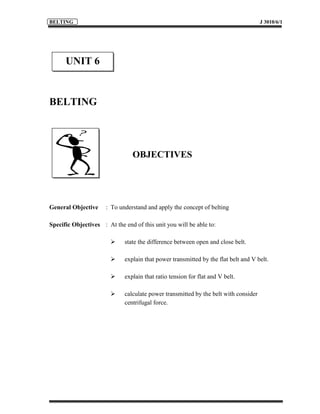The document discusses different types of belting used to transmit power between rotating shafts in factories, including flat belts and V-belts. It provides objectives and formulas for calculating the length of open and closed belt drives, as well as the power transmitted by a belt based on the tension in the tight and slack sides and the belt velocity. Worked examples are included to demonstrate calculating belt length and transmitted power.


























